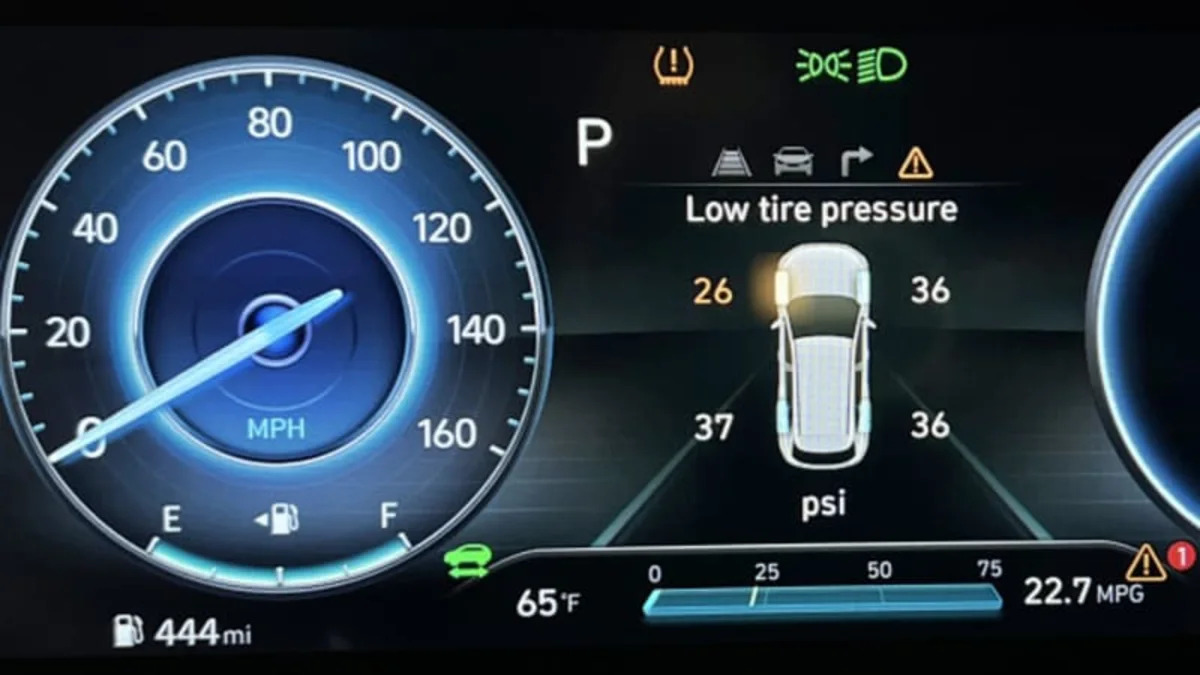Autoblog may receive a share from purchases made via links on this page. Pricing and availability are subject to change.
Don’t leave home without it.
That’s one of the meaningful recommendations delivered to drivers in a new study on tire pressure by the American Automobile Association: Keep “a dependable old-school manual” tire pressure gauge in the glove box.
Since 2008, Tire Pressure Monitoring Systems have been federally-mandated equipment in all passenger vehicles under 10,000 pounds sold in the U.S. The systems — there are two types — are generally accurate in determining if the air pressure in a specific tire is dangerous low, the study confirmed, finding that “no significant error in displayed tire pressure readings was noted for any vehicles evaluated within the study.’’
But AAA engineers still encourage drivers to “check tire pressure manually. They are the only part of your car in contact with the road, and proper inflation is the key to safety and better gas mileage.”
A handheld pressure gauge is a relatively modest investment, with many selling for $10 to $22 on Amazon.
The AAA said that it evaluated 11 randomly selected passenger vehicles, 2022-2024 models including sedans, pickups, and SUVs, with “direct” TPMS, which uses air pressure sensors mounted in each wheel. According to the AAA study, the average percentage difference between displayed and actual tire pressure was between 1.2 percent and minus-1.5 percent, depending on tire location.
Additionally, on five of 11 test vehicles, the amber warning TPMS light illuminated when tires were underinflated to 75 percent of the posted pressure (located on the sticker inside the door jam). Five of the six remaining test vehicles illuminated the TPMS warning dashboard light when tires were deflated to 70.3 to 72.9 percent of posted pressure, depending on the test vehicle.
The study warned that the TPMS lights only illuminate when one or more tires are severely underinflated, “so drivers should regularly check the displayed tire pressure at each corner. In addition, not all vehicle TPMS systems provide pressure readings. Some systems, especially on older vehicles, only have a warning light if one or more tires are low.”
“Tires are the unsung heroes of your car,” said Greg Brannon, AAA’s director of automotive engineering. “They are designed to work best when properly inflated. Our research found that the pressure monitoring systems that provide data for instrument displays or trigger the amber dashboard warning worked as intended. But we recommend always having a dependable old-school manual pressure gauge to check them once a month.”
Read the full report for methodology details, including specific vehicle makes/models, tire brands and specifications, and testing equipment.


Sign in to post
Please sign in to leave a comment.
Continue